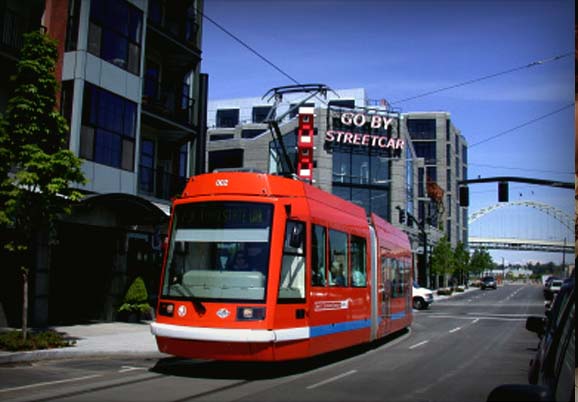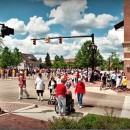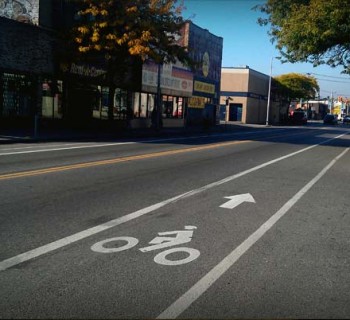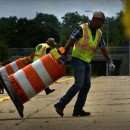A comprehensive transportation system is vital to move michigan into the 21st century and give the state the competitive advantage it needs to thrive. Accessible and efficient public transit, non-motorized paths and well maintained roads and bridges create a solid foundation for a high quality of life for everyone who lives, works or plays in the region. Multi-modal transport systems bring well known benefits such as economic growth, improved health and environmental sustainability.
In the midst of advocating for these benefits one intrinsic benefit is often forgotten, especially in Michigan: economic development. Robust transportation options — namely fixed, mass transit such as passenger and light rail, bus rapid transit and safe pedestrian and bike paths — provide significant economic benefit to a region and state. Smart and efficient modes of public transport provide sustainable ways to travel to work, school, shopping and recreation. This makes a region an infinitely more attractive place to live than a region built solely on single occupancy vehicle transport. Such regions are plagued with deadlocked traffic, pollution, and sedentary lifestyles.
After years of planning our cities around massive interstate interchanges, multi-modal transportation is breaking through. In the last decade, a clear correlation has emerged between effective transportation and economic prosperity in cities. A recent study by the IBM Institute for Business Value, Transportation and Economic Development, provides data and details about why comprehensive and Intelligent Transport Systems are important to support jobs and economic growth in American cities.
A major driver in jobs and growth is the ability to attract talent – entrepreneurs, the creative class (a term coined by placemaking expert, Richard Florida), medical professionals, and beyond – to create opportunities for jobs and talent on all levels. The number of mobile, highly educated individuals is expected to rise over the next two decades, and the competition among regions to attract and retain that talent will be highly dependent on a strong and smart transportation system.
The IBM study explains that transport systems can be leveraged by regions experiencing falling population, such as Detroit, to stimulate recovery, jobs and growth, and stem further population declines. Populations across demographics are gravitating toward regions that allow for them to ditch their single occupancy vehicles and embrace the efficient, environmentally responsible and healthy lifestyle that comes along with utilizing other modes of transport.
Another trend, mainly for young adults, is to choose where to live based not solely on job opportunity, but also on what Richard Florida calls the “Three T’s”: Technology, Tolerance and Talent (source). Increasingly, many young people want to live in dynamic cities that are modern and accommodating to all, including those without cars. In turn, smart and powerful companies are reacting to this trend by locating and relocating to cities with successful transportation systems.
Many companies on Fortune’s 100 Best Companies to Work For list such as Google, Boston Consulting Group, Microsoft and Zappo’s are headquartered in cities with great transport systems. They often develop their office and commercial buildings with smart transport, walkability and placemaking in mind. While many of these companies locate in major metropolitan cities, many of them locate in mid-size cities like Mountain View, CA and Rochester, NY. Small and mid-sized cities, comparable to Ann Arbor, Lansing, Grand Rapids, Kalamazoo or Traverse City, are often overlooked in the discussion of comprehensive transportation systems where they have great potential.
Akin to job growth, property values, and rent rates are positively correlated to public transportation and walkability. A study recently released by by the American Public Transportation Association and the National Association of Realtors® revealed that property values performed 42 percent better on average if they are located near public transportation with high-frequency service. APTA President and CEO Michael Melaniphy explained that “When homes are located near public transportation, it is the equivalent of creating housing as desirable as beach front property … consumers are choosing neighborhoods with high-frequency public transportation because it provides access to up to five times as many jobs per square mile as compared to other areas in a given region. Other attractive amenities in these neighborhoods include lower transportation costs, walkable areas and robust transportation choices” (source).
A great example of a region experiencing a boom of transit oriented development is Northern New Jersey. This area in New Jersey is located less than an hour via public transit from Manhattan, New York and is being called a “development pipeline” because of the numbers of projects that are in the works. The area is becoming extremely attractive due to its proximity to New York City, reasonable rents and property values, and most notably, its access to public transit. The map below highlights development projects with a red X that are located at a transit stop.
Public transportation and walkability fosters employment opportunities, commerce and capital investments. Transit oriented development creates a better quality of life, promotes responsible land use and hinders sprawl. Transportation systems are the connection and foundation for everyone and everything, everywhere. The often overlooked benefit of a comprehensive transportation system – economic development – could be the key to win the support of many who may be unsure about the value of improving our transportation system. Developing more modern, multi-modal transportation system in Michigan will improve quality of life and provide countless benefits.










